D.B. Wijesinghe
Galaxy And Mass Assembly (GAMA) : galaxy environments and star formation rate variations
Wijesinghe, D.B.; Hopkins, A.M.; Brough, S.; Taylor, E.N.; Norberg, P.; Bauer, A.; Brown, M.J.I.; Cameron, E.; Conselice, C.J.; Croom, S.; Driver, S.; Grootes, M.W.; Jones, D.H.; Kelvin, L.; Loveday, J.; Pimbblet, K.A.; Popescu, C.C.; Prescott, M.; Sharp, R.; Baldry, I.; Sadler, E.M.; Liske, J.; Robotham, A.S.G.; Bamford, S.; Bland-Hawthorn, J.; Gunawardhana, M.; Meyer, M.; Parkinson, H.; Drinkwater, M.J.; Peacock, J.; Tuffs, R.
Authors
A.M. Hopkins
S. Brough
E.N. Taylor
Professor Peder Norberg peder.norberg@durham.ac.uk
Professor
A. Bauer
M.J.I. Brown
E. Cameron
C.J. Conselice
S. Croom
S. Driver
M.W. Grootes
D.H. Jones
L. Kelvin
J. Loveday
K.A. Pimbblet
C.C. Popescu
M. Prescott
R. Sharp
I. Baldry
E.M. Sadler
J. Liske
A.S.G. Robotham
S. Bamford
J. Bland-Hawthorn
M. Gunawardhana
M. Meyer
H. Parkinson
M.J. Drinkwater
J. Peacock
R. Tuffs
Abstract
We present a detailed investigation into the effects of galaxy environment on their star formation rates (SFRs) using galaxies observed in the Galaxy And Mass Assembly (GAMA) survey. We use three independent volume-limited samples of galaxies within z < 0.2 and Mr < −17.8. We investigate the known SFR–density relationship and explore in detail the dependence of SFR on stellar mass and density. We show that the SFR–density trend is only visible when we include the passive galaxy population along with the star-forming population. This SFR–density relation is absent when we consider only the star-forming population of galaxies, consistent with previous work. While there is a strong dependence of the EWHα on density we find, as in previous studies, that these trends are largely due to the passive galaxy population and this relationship is absent when considering a ‘star-forming’ sample of galaxies. We find that stellar mass has the strongest influence on SFR and EWHα with the environment having no significant effect on the star formation properties of the star-forming population. We also show that the SFR–density relationship is absent for both early- and late-type star-forming galaxies. We conclude that the stellar mass has the largest impact on the current SFR of a galaxy, and any environmental effect is not detectable. The observation that the trends with density are due to the changing morphology fraction with density implies that the time-scales must be very short for any quenching of the SFR in infalling galaxies. Alternatively, galaxies may in fact undergo predominantly in situ evolution where the infall and quenching of galaxies from the field into dense environments is not the dominant evolutionary mode.
Citation
Wijesinghe, D., Hopkins, A., Brough, S., Taylor, E., Norberg, P., Bauer, A., …Tuffs, R. (2012). Galaxy And Mass Assembly (GAMA) : galaxy environments and star formation rate variations. Monthly Notices of the Royal Astronomical Society, 423(4), 3679-3691. https://doi.org/10.1111/j.1365-2966.2012.21164.x
| Journal Article Type | Article |
|---|---|
| Publication Date | Jul 11, 2012 |
| Deposit Date | Jun 3, 2014 |
| Publicly Available Date | Aug 22, 2014 |
| Journal | Monthly Notices of the Royal Astronomical Society |
| Print ISSN | 0035-8711 |
| Electronic ISSN | 1365-2966 |
| Publisher | Royal Astronomical Society |
| Peer Reviewed | Peer Reviewed |
| Volume | 423 |
| Issue | 4 |
| Pages | 3679-3691 |
| DOI | https://doi.org/10.1111/j.1365-2966.2012.21164.x |
| Keywords | Galaxies: evolution, Galaxies: formation, Galaxies: general, Galaxies: star formation. |
| Public URL | https://durham-repository.worktribe.com/output/1459923 |
Files
Published Journal Article
(7.1 Mb)
PDF
Copyright Statement
This article has been accepted for publication in Monthly Notices of the Royal Astronomical Society © 2012 The Authors Monthly Notices of the Royal Astronomical Society © 2012 RAS Published by Oxford University Press on behalf of Royal Astronomical Society. All rights reserved.
You might also like
The two-point correlation function covariance with fewer mocks
(2023)
Journal Article
The DESI Bright Galaxy Survey: Final Target Selection, Design, and Validation
(2023)
Journal Article
A sparse regression approach for populating dark matter haloes and subhaloes with galaxies
(2022)
Journal Article
Solving small-scale clustering problems in approximate light-cone mocks
(2022)
Journal Article
Downloadable Citations
About Durham Research Online (DRO)
Administrator e-mail: dro.admin@durham.ac.uk
This application uses the following open-source libraries:
SheetJS Community Edition
Apache License Version 2.0 (http://www.apache.org/licenses/)
PDF.js
Apache License Version 2.0 (http://www.apache.org/licenses/)
Font Awesome
SIL OFL 1.1 (http://scripts.sil.org/OFL)
MIT License (http://opensource.org/licenses/mit-license.html)
CC BY 3.0 ( http://creativecommons.org/licenses/by/3.0/)
Powered by Worktribe © 2025
Advanced Search
